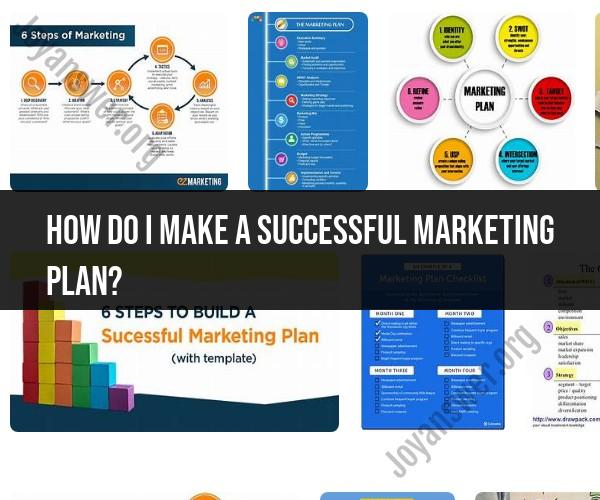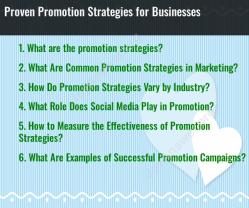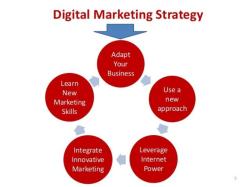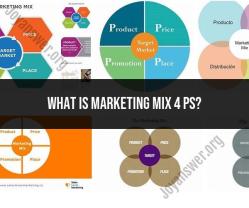How do I make a successful marketing plan?
Creating a successful marketing plan is crucial for the growth and success of your business. It provides a structured framework for reaching your target audience, promoting your products or services, and achieving your business goals. Here are the key steps and strategies to make a successful marketing plan:
1. Set Clear Goals and Objectives:
- Begin by defining specific and measurable marketing goals. What do you want to achieve with your marketing efforts? Examples include increasing sales by a certain percentage, expanding your customer base, or launching a new product.
2. Know Your Target Audience:
- Identify and understand your target audience. Who are your ideal customers? What are their demographics, interests, and pain points? Tailor your marketing efforts to address their needs and preferences.
3. Conduct Market Research:
- Research your industry, competitors, and market trends. Gather data on market size, customer behavior, and emerging opportunities. This information will inform your marketing strategy.
4. SWOT Analysis:
- Conduct a SWOT analysis (Strengths, Weaknesses, Opportunities, Threats) to assess your business's internal strengths and weaknesses, as well as external opportunities and threats. Use this analysis to shape your marketing strategy.
5. Develop a Unique Value Proposition (UVP):
- Clearly articulate what sets your products or services apart from the competition. Your UVP should highlight the benefits and value you offer to customers.
6. Choose Marketing Channels:
- Determine which marketing channels are most suitable for reaching your target audience. Options include social media, email marketing, content marketing, search engine optimization (SEO), paid advertising, and more.
7. Create a Content Strategy:
- Develop a content plan that includes blog posts, articles, videos, infographics, and other content that provides value to your audience. Content should align with your UVP and address customer pain points.
8. Set a Budget:
- Allocate a budget for your marketing plan. Consider both the cost of advertising and the resources needed for content creation, graphic design, and other marketing activities.
9. Create a Marketing Calendar:
- Develop a calendar that outlines when and where you'll execute your marketing activities. This helps you stay organized and ensures a consistent presence in your chosen marketing channels.
10. Implement Marketing Tactics:- Execute your marketing strategies and tactics based on your plan. This may involve launching ad campaigns, publishing content, engaging on social media, and more.
11. Measure and Analyze Results:- Regularly track and measure the performance of your marketing efforts. Use analytics tools to assess website traffic, conversion rates, social media engagement, and other relevant metrics.
12. Adjust and Optimize:- Based on your performance data, make necessary adjustments to your marketing plan. Identify what's working well and what needs improvement, then refine your strategy accordingly.
13. Monitor Your Competition:- Keep an eye on your competitors' marketing strategies and adjust your plan as needed to stay competitive in the market.
14. Build Customer Relationships:- Focus on building and maintaining strong relationships with your customers. Provide excellent customer service, engage with them on social media, and gather feedback to improve your offerings.
15. Stay Informed and Adapt:- Stay up-to-date with industry trends, changes in consumer behavior, and emerging technologies. Adapt your marketing plan as needed to stay relevant and effective.
Remember that a successful marketing plan is an ongoing process that requires flexibility and adaptation. By continuously analyzing data, staying connected with your audience, and refining your strategies, you can create a marketing plan that drives growth and success for your business.
Crafting a Successful Marketing Plan: Step-by-Step Guide
A marketing plan is a roadmap for how you will achieve your marketing goals. It should include a clear understanding of your target audience, your competitive landscape, your marketing objectives, and your strategies for achieving those objectives.
Here is a step-by-step guide to crafting a successful marketing plan:
- Define your target audience. Who are you trying to reach with your marketing message? What are their needs and wants?
- Analyze your competitive landscape. Who are your competitors? What are they doing well? What could they be doing better?
- Set your marketing objectives. What do you want to achieve with your marketing efforts? Do you want to increase brand awareness, generate leads, or drive sales?
- Develop your marketing strategies. How will you achieve your marketing objectives? What channels will you use to reach your target audience? What kind of content will you create?
- Create a marketing budget. How much money do you have to spend on marketing? How will you allocate your budget to different channels and strategies?
- Implement and track your marketing plan. Once your plan is in place, it's important to implement it and track your results. This will help you to see what's working and what's not, so that you can make adjustments as needed.
Marketing Strategies for Success: Building an Effective Plan
There are many different marketing strategies that you can use to achieve your marketing goals. Some of the most common strategies include:
- Content marketing: Content marketing involves creating and distributing valuable, relevant, and consistent content to attract and retain a clearly defined audience and drive profitable customer action.
- Search engine optimization (SEO): SEO is the process of optimizing your website and content so that it ranks higher in search engine results pages (SERPs).
- Pay-per-click (PPC) advertising: PPC advertising is a type of online advertising where you pay a fee each time someone clicks on your ad.
- Social media marketing: Social media marketing involves using social media platforms to connect with your target audience and promote your products or services.
- Email marketing: Email marketing involves sending email newsletters and promotional messages to your subscribers.
When choosing marketing strategies for your business, it's important to consider your target audience, your budget, and your goals. You should also choose strategies that are aligned with your overall marketing plan.
Marketing Mastery: Steps to a Winning Marketing Plan
To create a winning marketing plan, you need to:
- Set clear and measurable goals. What do you want to achieve with your marketing efforts? Do you want to increase brand awareness, generate leads, or drive sales? Once you know your goals, you can develop strategies to achieve them.
- Understand your target audience. Who are you trying to reach with your marketing message? What are their needs and wants? The better you understand your target audience, the more effective your marketing will be.
- Choose the right marketing channels. Where do your target customers spend their time? Which channels are they most likely to see your marketing messages? Choose the channels that are most relevant to your target audience and your budget.
- Create compelling content. Your marketing content should be informative, engaging, and relevant to your target audience. It should also be optimized for the channels you are using to distribute it.
- Track your results. It's important to track the results of your marketing efforts so that you can see what's working and what's not. This will help you to make adjustments to your plan as needed.
By following these steps, you can create a winning marketing plan that will help you to achieve your marketing goals.











